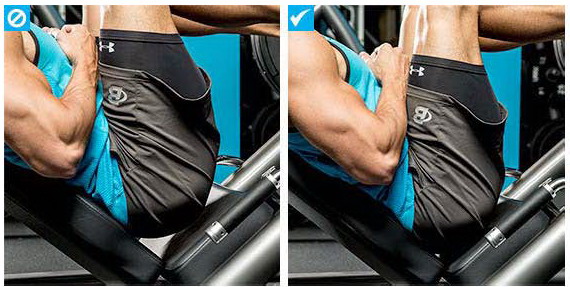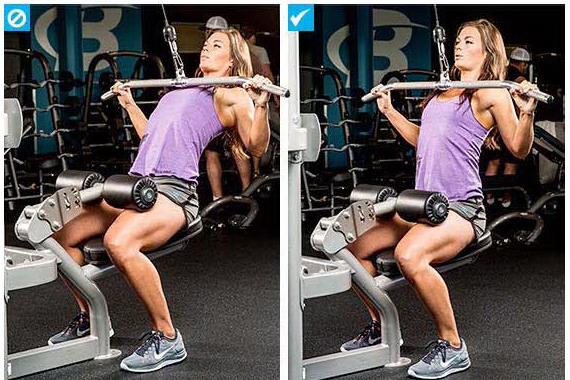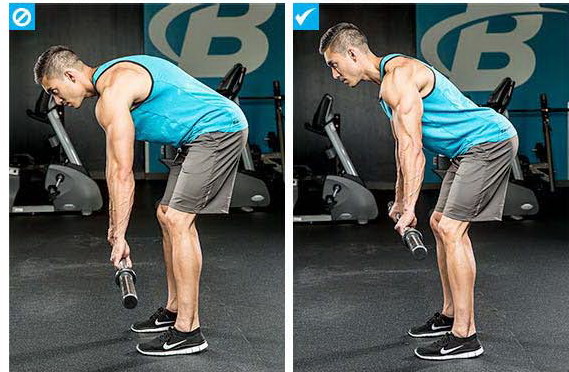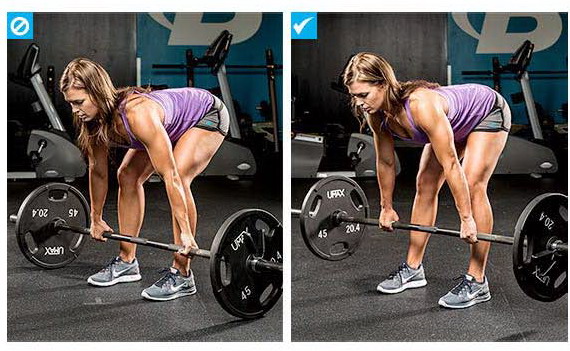
Articles
FIX YOUR 5 BIGGEST TRAINING MISTAKES
One of the most entertaining aspects of having a smart phone in the gym is capturing the goofball who has no idea what he's doing while exercising, and then posting his antics online. The poor guy thinks he's getting in a serious workout, but he's about to become the clown everyone else thinks is so hilarious.
You know what's really scary? That guy—or girl—could be you or me, or any gym greenhorn, adventurous exerciser, or person willing to try something challenging or new. Not everyone is born with an innate sense of how to do exercises properly, and some movements are much more difficult to master than others. It's time to stop judging and start learning.
With that in mind, here are five exercises or families of movements that nearly everyone has struggled to do correctly. Know them, study them, and practice them, because not only do you want to save yourself from potential injury and wasted effort, you do not want to be the subject of someone else's funny video.
1 EXERCISE: BICEPS CURLS
Target Muscle: Biceps
What's Wrong: Straying from Your Sides
.jpg)
BICEPS CURLS
This is a common mistake across almost all biceps moves. When you perform a curl, you typically want to raise the weight as high as possible, but doing so often entails pulling your biceps from a fixed position by the sides of your body.
The biceps should be locked by your sides, working as a hinge. When they get pulled forward, the front delts become engaged, which turns a single-joint biceps exercise into a multi-joint shoulders and biceps move.
Furthermore, when you stray from your sides, your hands end up directly over your elbows at the top, which gives you a nice little resting spot and takes tension off the muscle in the peak-contracted position. (That's sarcasm, folks.)
Make This Change: Lock your elbows by your sides for the duration of the set—and keep them there. Whether you're doing standing curls, seated curls, or cable curls, your hands should never be as high as your shoulders in the peak-contracted position, which means your biceps are working hard at the top—not resting.
2 EXERCISE: LEG PRESS
Muscle Group: Thighs, Glutes
What's Wrong: Sledding Too Low

LEG PRESS
It's hard to mess up a machine move, right? Well, here the problem arises when you lower the sled too far. Because your back is well-supported against the pad, you might not even realize you're making this error. But, as your thighs approach your shoulders, it's easy for your glutes to lift off the back pad, which puts your lumbar spine and discs at a much higher risk for injury.
Make This Change: For one, control the speed of the descent of the leg press to minimize any jolts to your spine. Second, be aware of the point at which your glutes start to lift off the pad; even though you can probably lower the sled even farther, in this case it's not a good idea to increase the range of motion at the expense of your discs. Smoothly reverse direction, pressing through your entire feet.
3 EXERCISE: SEATED PULL-DOWNS AND CABLE ROWS
Muscle Group: Upper lats (when used with a wide grip)
What's Wrong: Swaying To And Fro

LAT PULLDOWN
Seesawing forward and backward at the waist as you execute this move turns this upper-lat exercise into one in which the lower back is also engaged, and that's not the intention. Swaying also helps generate momentum, which makes the movement easier.
Make This Change: Strive to maintain an upright position throughout every rep, leaning forward or backward no more than about 10 degrees. This keeps the stress on the upper lats and middle-back muscles.
4 EXERCISE: BENT-OVER MOVES
Muscle Group: varies
What's Wrong: Rounding Your Back

BENT-OVER MOVES
Getting a hang for this body position is hard if you've never done it right, but once you nail it, you'll never do it wrong again. What we're talking about is maintaining a flat back (even slightly arched) when doing bent-over lateral raises, bent-over rows, and Romanian deadlifts. The overwhelming tendency is to round your back, which puts your discs at risk, especially when you're holding heavy weights.
Make This Change: Turn sideways to the mirror with no weights in your hands and look back at yourself. Bend over about 45 degrees, with a bend in your knees, and hold a slight arch in your back. Press your glutes to the rear and keep your chest up and shoulders back. Keep practicing till you get it exactly as shown. This is the position you need to hold for spinal safety when executing bent-over exercises.
One more thing: When you're facing the mirror in bent-over exercises and looking back at yourself, you've got your neck in a vulnerable position. Here the cervical spine is hyperextended, which is also potentially dangerous to the spine. Keep your neck in the same plane as your body when doing bent-over moves—don't look up.
5 EXERCISE: DEADLIFTS
Muscle Group: Back, Traps, Thighs, Glutes
What's Wrong: Mixing Movements

ROMANIAN DEADLIFT
Maybe it's because the deadlift and Romanian deadlift are both such great exercises and share a common name, but all too often lifters combine elements of each exercise into a hybrid of sorts, causing a unique set of problems. You don't want to simply bend over on deadlifts (which turns this into a single-joint move), nor do you want to have the plates settle on the floor when doing RDLs, which takes tension off the muscle and sends a jolt through your spine.
Make This Change: Understand these are two distinct exercises and learn how to do each properly. The Romanian is best done on hamstrings day (working the glute-ham tie-in exceptionally well), and the bar should never touch the floor from rep to rep. The deadlift requires you to get your butt down at the bottom of the lift, which better engages all the leg muscles. And yes, here the bar should settle on the floor between reps, which gives the deadlift its name, as it comes from a dead stop.